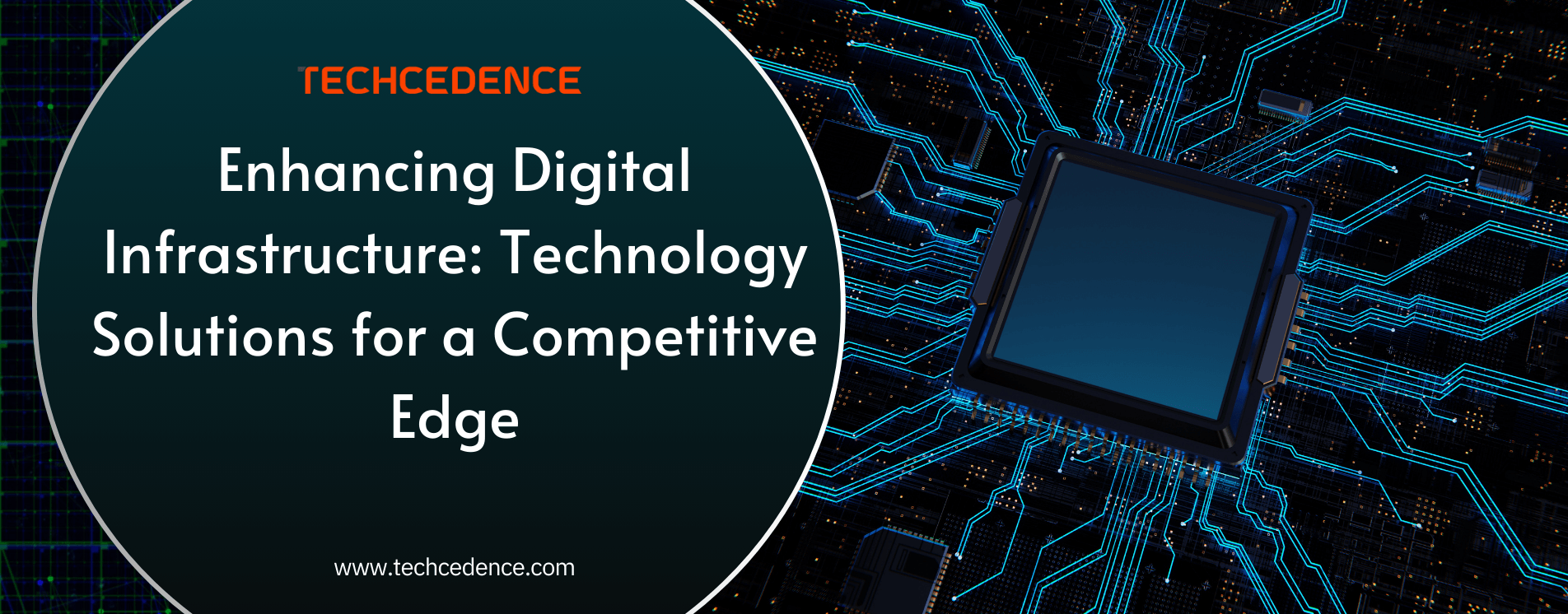
Categories : Uncategorized
Author : Date : Dec 5, 2024
Digital infrastructure forms the foundation of operational success and innovation. A well-designed infrastructure empowers businesses to streamline processes, adapt to shifting market demands, and foster innovation. As technology advances rapidly, keeping digital systems updated is crucial for ensuring both competitiveness and long-term growth. Companies that prioritize infrastructure modernization can unlock new efficiencies, improve customer engagement, and gain a strategic edge in their industries.
Core Components of Digital Infrastructure
1. Cloud Computing
Cloud computing has transformed how companies handle their IT infrastructure by providing a more adaptable, scalable solution in contrast to conventional on-site systems. This change enables businesses to expand their operations rapidly without requiring significant initial investments in tangible equipment. Cloud services allow companies to pay solely for the resources they utilize, aiding in cost reduction and enhanced efficiency. Furthermore, cloud computing simplifies remote access to data and applications, enhancing collaboration among teams. By utilizing hybrid and multi-cloud approaches, companies can enhance data security, management, and general system resilience.
2. Network Modernization
A reliable, high-speed network is critical for seamless connectivity and data transfer. Technologies such as 5G and Software-Defined Wide Area Networks (SD-WAN) enhance performance by optimizing bandwidth usage and ensuring secure connections. These networks empower businesses to support real-time applications and remote operations efficiently.
3. Data Management and Storage
The rapid increase in data volume has made modern storage solutions essential for businesses. Companies are shifting from traditional on-site storage to cloud-based and decentralized options that offer greater flexibility. These modern solutions not only provide scalability but also improve data security and accessibility. By implementing advanced data management strategies, organizations can extract valuable insights, enabling more informed and strategic decision-making.
4. Cybersecurity Enhancements
As digital infrastructure expands, so does the need for robust cybersecurity. A comprehensive cybersecurity framework protects against data breaches and cyberattacks. Multi-layered security strategies, including endpoint protection, encryption, and threat intelligence, are essential to safeguard sensitive information and maintain business continuity.
Innovative Tech Solutions Driving Digital Infrastructure Enhancement
1. Automation and AI
Automation and AI are revolutionizing digital infrastructure by improving efficiency and enabling proactive maintenance. AI systems analyze extensive data sets, uncovering patterns and insights that help guide business strategies. By automating repetitive tasks, organizations can allocate resources to more critical, high-impact projects, fostering innovation and productivity.
2. Edge Computing
Edge computing involves processing data directly where it is generated, which significantly reduces delays and allows for quicker decision-making. This is especially beneficial for industries such as healthcare, manufacturing, and retail, where instant access to information is crucial. By decentralizing the data processing, businesses can boost overall system efficiency and provide faster, more responsive services to their users.
3. IoT Integration
The Internet of Things (IoT) connects devices and systems, creating a network of smart, interconnected assets. IoT solutions facilitate real-time monitoring, predictive maintenance, and improved asset management. By leveraging IoT, businesses can optimize operations, reduce costs, and enhance efficiency.
4. Digital Twins
Digital twins are digital replicas or virtual models of physical objects, systems, or processes. These digital representations are created using data collected from sensors and other sources in real-time. By simulating the performance of their physical counterparts, businesses can analyze various scenarios, predict potential outcomes, and optimize operations. This technology allows organizations to better manage infrastructure, reduce downtime, and improve decision-making by gaining deeper insights into the behavior and performance of their assets.
Benefits of Modernizing Digital Infrastructure
1. Enhanced Operational Efficiency
Modern infrastructure reduces bottlenecks and streamlines processes, leading to faster service delivery and improved productivity. Automation and data integration ensure that operations run smoothly and efficiently.
2. Business Agility and Flexibility
Agile infrastructure allows businesses to adapt quickly to changing market conditions. Scalable solutions enable organizations to expand or contract resources as needed, ensuring they can respond to evolving demands.
3. Better Customer Experiences
A modern digital infrastructure enhances customer experiences by enabling personalized services and proactive support. Real-time data insights help businesses anticipate customer needs and deliver tailored solutions.
4. Competitive Edge
Organizations that invest in advanced digital infrastructure gain a strategic advantage. By leveraging the latest technologies, they can innovate faster, improve service delivery, and differentiate themselves in the market.
Overcoming Challenges in Infrastructure Modernization
1. Common Challenges
Businesses often face hurdles when modernizing their infrastructure, including legacy systems, budget constraints, and integration complexities. These challenges can slow down digital transformation efforts and impact overall efficiency.
2. Solutions to Address Challenges
Addressing these challenges demands a well-planned strategy. By thoroughly evaluating current infrastructure, setting clear priorities for investments, and implementing changes in stages, businesses can reduce risks. Partnering with Techcedence ensures access to cutting-edge technologies and proven methods, helping to make the transition smooth and effective.
Strategic Steps for Enhancing Digital Infrastructure
Upgrading digital infrastructure is vital for businesses aiming to stay competitive in an evolving marketplace. By integrating cutting-edge technologies and making strategic upgrades, companies can create new opportunities for growth, flexibility, and innovation. A well-executed plan for infrastructure modernization improves operational efficiency and equips businesses to respond quickly to changing market demands. Partnering with Techcedence ensures the seamless implementation of these upgrades, helping businesses position themselves for long-term success in a dynamic environment.